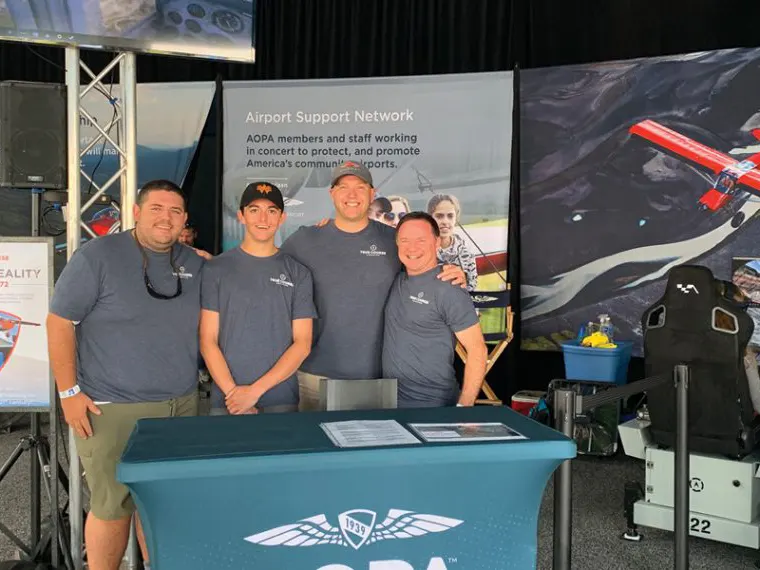
True Course Simulations grew from a small, isolated business in Prescott into one that now manufactures virtual reality (VR) flight simulators for the U.S. Air Force Academy in Colorado Springs.
AJ Smith, True Course director of sales, said the academy issued a contract for units to support operation of 40 simulators.
Company owner Ray Bedard said the new U.S. Air Force Academy agreement’s value is “comfortably over a million dollars.” Its first contract with the academy was signed in 2018-19.
Smith said True Course is the one of the few companies doing professional virtual reality.
“It’s the only company to develop a ‘virtual flight instructor’. VR allows educators to reduce substantially their students-to-instructor ratio,” Bedard said.
Formally called Immersive Training Devices, some users suggest that operating such a device is more difficult that piloting actual airplanes.
“Simulation isn’t meant to replace real airplanes,” Bedard said. “You must combine simulators and airplanes together for the things each of them is good at.”
Bedard started the company following his retirement from a 20-plus year career as a faculty member at Embry-Riddle Aeronautical University (ERAU). Previously, he had been in the Canadian Air Force.
Six full-time employees work for the company, 430 N. Mount Vernon Ave., including Bedard, Smith, IT Specialist Ken Watts and Brett Watts, an ERAU graduate and co-owner and vice president. Two more are full-time instructors at the Air Force Academy. Two part-time employees help with setting up machines.
True Course Simulations has built simulators for ERAU’s Daytona Beach campus. Four simulators are being constructed for a high school in Liberty Creek, Tennessee, and another eight for additional clients.
The company was invited to partner with Aircraft Owners & Pilots Association, the largest U. S. aviation lobby group, at the world’s largest airshow — Air Venture, July 22-25, in Oshkosh, Wisconsin.
True Course manufactures two distinct simulator platforms. Both are about the size of a large rectangular table, with a large screen at the front. One is focused on simulation for flying a Cessna 172, a popular aircraft used for student pilot training. Other prototypes are in design, among them one for the Cirrus aircraft out of Duluth, Minnesota.
The second device is called “the fighter,” for aircraft which have a side or center “stick” rather than a yoke or control wheel as found in the Cessna and other planes.
The cost of the Cessna simulator is around $35,000. For the fighter unit, it’s a bit higher, around $38,000.
All simulators have virtual reality helmets praised as having amazing fidelity, realism, high impact graphics and sound appropriate to terrain over which aircraft are being flown.
Smith, the sales director, says considerable effort is dedicated to creating virtual reality videos, diagrams, development of tests and instructional diagrams. The curriculum — 73 missions in virtual reality — costs $495.
“Students can repeat VR missions until they are mastered. Think of the cost savings as opposed to taking lessons in a real airplane,” he said.
“We hope we can create enough awareness of our ITDs (Immersive Training Devices) to get them into every career and technical education program at high schools and colleges across the country,” Smith said.
